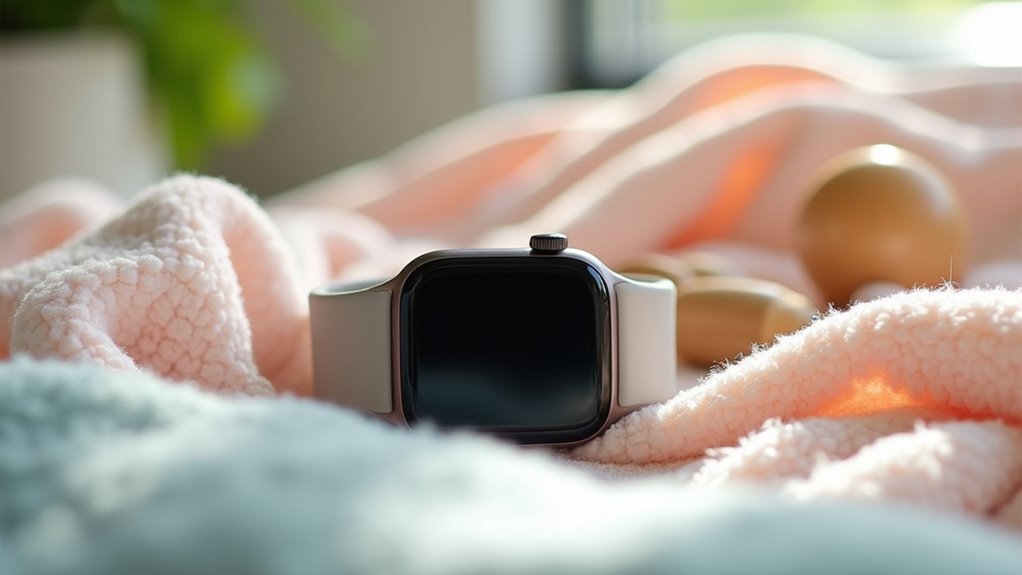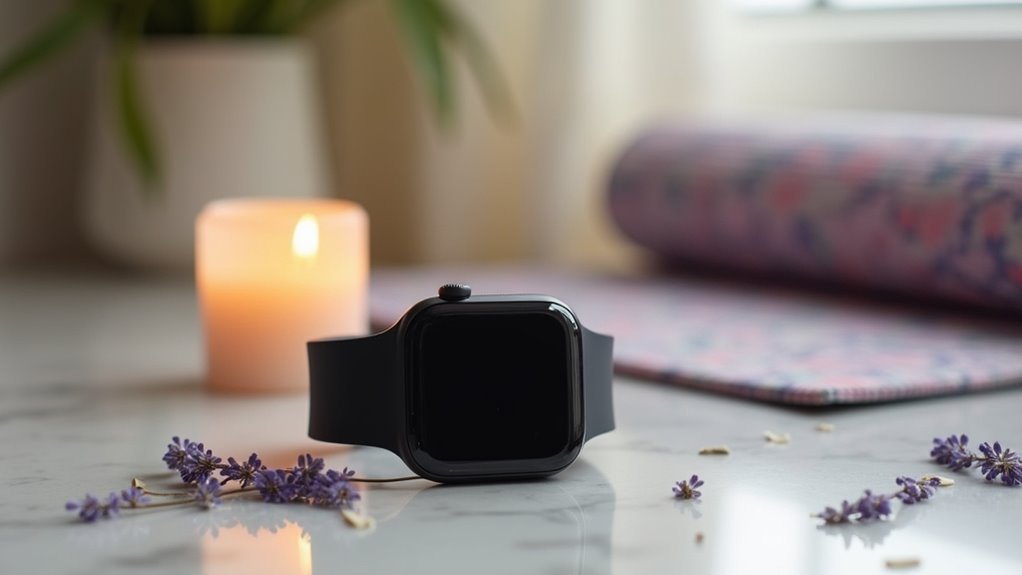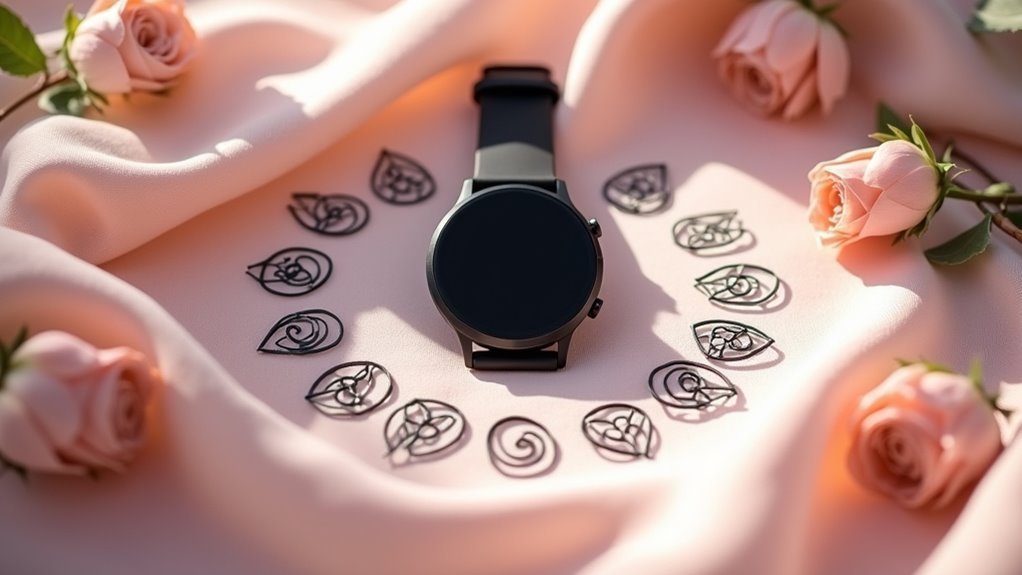You’ll achieve accurate smartwatch stress tracking by wearing your device consistently every day to establish reliable physiological baselines—inconsistent use prevents proper pattern recognition. Guarantee ideal sensor contact by positioning the watch snugly on your wrist’s top side and minimizing movement during measurements to avoid corrupted data. Choose devices with validated multi-parameter algorithms that combine heart rate variability, electrodermal activity, and temperature monitoring rather than simple heart rate tracking. These foundational strategies release your smartwatch’s full stress detection potential.
Establish a Reliable Physiological Baseline Through Consistent Daily Wear
Since your smartwatch’s stress tracking accuracy depends heavily on understanding your unique physiological patterns, you’ll need to wear it consistently every day to establish a reliable baseline.
This continuous data collection allows your device’s advanced sensors to monitor heart rate, respiratory rate, and body temperature while learning your normal ranges.
Without consistent wear, your smartwatch can’t differentiate between your typical stress responses and actual concerning spikes.
Inconsistent smartwatch use prevents the device from distinguishing between your normal stress patterns and genuinely alarming physiological changes.
Data normalization techniques require this ongoing information to account for your individual baseline differences, making accuracy improvements possible over time. However, physiological differences may cause occasional inaccuracies in the data even with consistent monitoring.
The key is maintaining data continuity so your device can identify patterns and anomalies in your physiological signals.
This consistent monitoring creates the foundation for reliable stress detection algorithms to function effectively.
Optimize Sensor Contact and Minimize Movement Artifacts During Data Collection
When your smartwatch shifts or loses proper skin contact, its sensors can’t accurately capture the physiological signals needed for reliable stress tracking.
You’ll want to verify your wristband fits snugly against your skin without being uncomfortably tight. Position the device on the top of your wrist where there’s minimal movement and flesh is closest to underlying blood vessels.
To minimize movement artifacts that can corrupt your stress data:
- Incorporate brief rest periods during intense activities when possible
- Use data filtering algorithms in your smartwatch app settings
- Establish consistent protocols for when and how you collect stress measurements
- Adjust your physical activity expectations based on movement intensity
Regular sensor calibration and choosing breathable, flexible wristband materials will further enhance your device’s accuracy and comfort during extended wear. This continuous monitoring capability allows you to track physiological responses throughout your daily activities for more comprehensive stress assessment.
Choose Devices With Validated Multi-Parameter Stress Detection Algorithms
While many smartwatches claim to track stress, you’ll get far more accurate results with devices that use validated multi-parameter detection algorithms rather than simple heart rate monitoring alone.
Look for smartwatches that combine HRV monitoring, electrodermal activity sensors, and temperature tracking with accelerometer data. These multi-modal systems provide extensive stress response profiles that greatly outperform single-parameter approaches.
Choose devices whose algorithms have been benchmarked against traditional machine learning classifiers using public datasets like WESAD.
You’ll want systems that process both time and frequency domain features through advanced architectures, as FFT-based spectral analysis captures stress-related information that time-domain-only methods miss.
Verify that your chosen device has been validated in real-world scenarios, not just controlled lab conditions, and offers user-independent stress detection protocols for reliable accuracy. The most effective devices also incorporate Ecological Momentary Assessment capabilities to gather real-time user experiences alongside physiological data.
Frequently Asked Questions
How Often Should I Calibrate My Smartwatch for Stress Tracking Accuracy?
You should calibrate your smartwatch every 28 days for ideal stress tracking accuracy. Samsung devices require this frequency, while other brands may vary. Always recalibrate when switching users or after significant changes.
Can Medications Affect My Smartwatch’s Stress Detection Readings?
Yes, medications can considerably affect your smartwatch’s stress readings. Beta-blockers, antidepressants, and blood pressure medications alter heart rate variability and cardiovascular responses, causing inaccurate stress detection and potential false positives or negatives.
What Stress Score Range Indicates I Should Seek Professional Help?
You should seek professional help when stress scores consistently stay above 70-80, especially if you’re experiencing anxiety, sleep issues, or physical symptoms that interfere with daily functioning.
How Long Does It Take to Establish a Reliable Baseline?
You’ll need to wear your smartwatch consistently for several weeks to establish a reliable baseline. Most devices require at least four nights weekly of sleep data and continuous daily wear during relaxed states.
Can I Use Stress Tracking Data During Pregnancy Safely?
You can safely use stress tracking data during pregnancy as a supplementary tool, but don’t rely on it exclusively. Always consult your healthcare provider and combine it with regular medical check-ups.





Leave a Reply